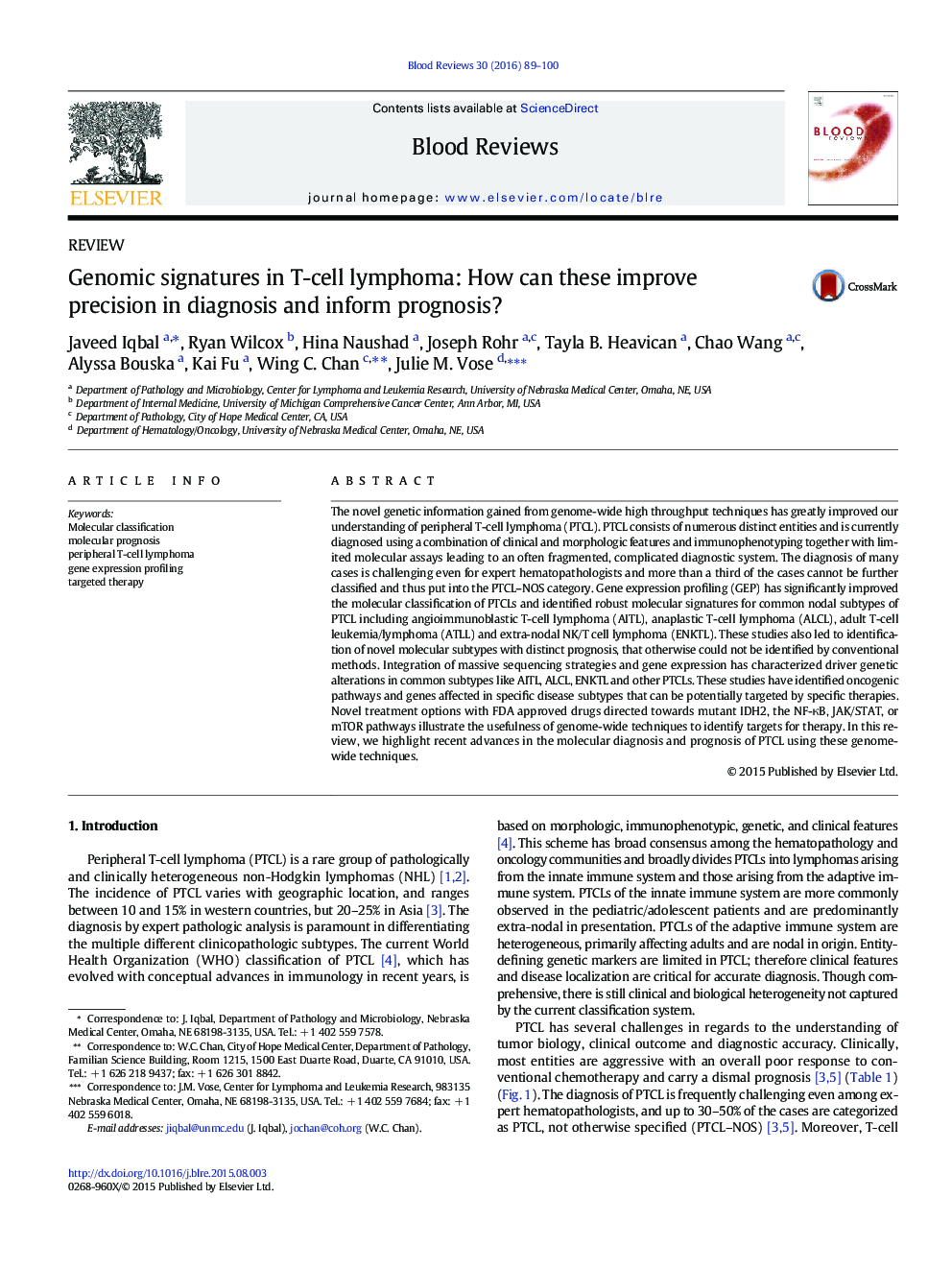| Article ID | Journal | Published Year | Pages | File Type |
|---|---|---|---|---|
| 2106143 | Blood Reviews | 2016 | 12 Pages |
The novel genetic information gained from genome-wide high throughput techniques has greatly improved our understanding of peripheral T-cell lymphoma (PTCL). PTCL consists of numerous distinct entities and is currently diagnosed using a combination of clinical and morphologic features and immunophenotyping together with limited molecular assays leading to an often fragmented, complicated diagnostic system. The diagnosis of many cases is challenging even for expert hematopathologists and more than a third of the cases cannot be further classified and thus put into the PTCL–NOS category. Gene expression profiling (GEP) has significantly improved the molecular classification of PTCLs and identified robust molecular signatures for common nodal subtypes of PTCL including angioimmunoblastic T-cell lymphoma (AITL), anaplastic T-cell lymphoma (ALCL), adult T-cell leukemia/lymphoma (ATLL) and extra-nodal NK/T cell lymphoma (ENKTL). These studies also led to identification of novel molecular subtypes with distinct prognosis, that otherwise could not be identified by conventional methods. Integration of massive sequencing strategies and gene expression has characterized driver genetic alterations in common subtypes like AITL, ALCL, ENKTL and other PTCLs. These studies have identified oncogenic pathways and genes affected in specific disease subtypes that can be potentially targeted by specific therapies. Novel treatment options with FDA approved drugs directed towards mutant IDH2, the NF-κB, JAK/STAT, or mTOR pathways illustrate the usefulness of genome-wide techniques to identify targets for therapy. In this review, we highlight recent advances in the molecular diagnosis and prognosis of PTCL using these genome-wide techniques.
